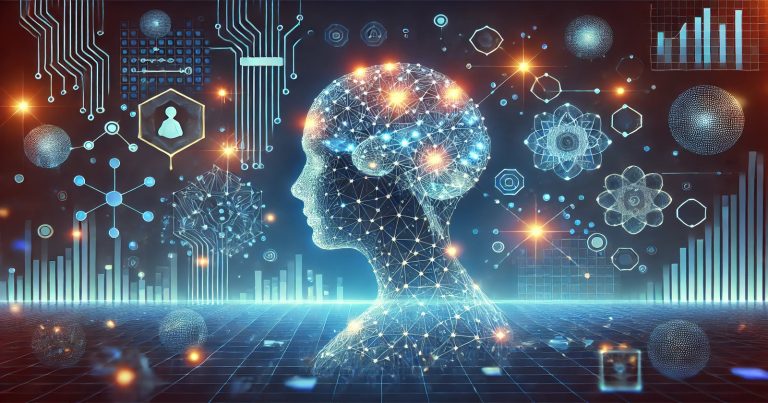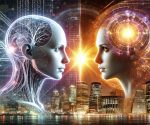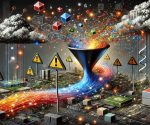Machine learning, with a subset of AI and computer science, is a computer’s ability to learn from data. It allows machines to make decisions independently without an individual directing them through each step in the process. Artificial intelligence and machine learning combine to help machines think and learn like us. So, machine learning is the answer to what machine learning is in the sense that it is a practice by which systems can extract patterns from data, make decisions based on this data, and adapt and improve autonomously.
This is called machine learning, where machines learn from large data. They spot patterns and leverage those patterns to address issues or foresee outcomes. That’s like when YouTube presents you with a new video you may enjoy or even when Google provides you the exact answers—that’s machine learning.
What is Machine Learning?
Machine learning, with a subset of AI and computer science, is a computer’s ability to learn from data. It allows machines to make decisions independently without an individual directing them through each step in the process. Artificial intelligence and machine learning combine to help machines think and learn like us. So, machine learning is the answer to what machine learning is in the sense that it is a practice by which systems can extract patterns from data, make decisions based on this data, and adapt and improve autonomously.
Types of Machine Learning
Supervised, Unsupervised & Reinforcement Learning. However, machines train in ways that are very different. That’s what we call types of machine learning. There are three significant types: supervised learning, unsupervised learning, and reinforcement learning. Each type teaches machines differently. These are relatable to Indian students who encounter real-life situations such as learning from textbooks, solving puzzles with no solutions, or learning through trial and error.
Supervised Learning
In supervised learning, machines learn from labeled data. What that means is that the computer already knows the right answer. It just has to figure out how to get there. Common knowledge that works in education is when teachers provide students with questions and answers to show them how everything works.
In supervised learning, algorithms are trained on input and correct output data.For example, when a computer learns how to identify cats in images, it gets tagged images such as “cat” or “not cat.” It detects patterns and learns to predict the correct label for new photos.
Example of supervised learning algorithms used in machine learning:
- Linear Regression
- Logistic Regression
- Decision Trees
- Support Vector Machines
These are used in real life:
- Predicting house prices
- Diagnosing diseases
- Email spam filters
- Weather forecasting
Unsupervised Learning
For the unsupervised learning scenario, the data is unmapped. All patterns the computer finds must be its own. This is like giving students a jigsaw puzzle with no clue at all. So they need to learn by trial and error.
Unsupervised learning is good for discovering hidden patterns or groups. Like for example, companies use it to know what kind of customers they have based on shopping behavior.
Some common algorithms are:
- K-Means Clustering
- Hierarchical Clustering
- PCA (Principal Component Analysis)
It is used in:
- Market segmentation
- Recommender systems
- Detecting frauds
- Social media analysis
Reinforcement Learning
Q-learning is like teaching your animal. You train the machine by making it try, rewarding it when it is right, and making it try again when it is wrong. It corrects itself based on feedback and gets better over time.
This is useful when machines have to make a series of decisions.” Such as video games, robotics, or even stock trading.
In reinforcement learning:
- The agent is the learner
- The agent is the agent that acts in the environment
- The reward indicates how good the action was
It is used in:
- Self-driving cars
- Game playing (like chess)
- Robot movement control
Depending on the problem, these three types of machine learning are different ways for machines to learn. Like subjects in school, some topics need books, and some require practice, but Indian students can understand them.
Real-Life Application of Machine Learning Algorithms
Machine learning is not something that can only be learned theoretically. It helps in real life, too. From banks to hospitals, mobile apps to farming-machine learning can be applied to everything. But how do they work? Let’s boil that down into a few simple steps.
Learning from Data
High-level, machine learning is just data processing; what it needs is data. The data can be Images, numbers, tex,t or anything. It learns through more data you feed, just like students do better by studying hard.
These data are divided into two groups:
- Training data — What the machine learns from
- Testing data — This data is used to test the machine
Data is trained and rules/patterns are found through Machine Learning algorithms. Next, new data are given the rules.
Making Predictions
Once the training is complete, the machine can make decisions or predictions about data. For example:
- Health app predicts sugar levels
- The transaction is marked as a fraud if it is fraudulent
- Google Translate Hindi to English
- Netflix suggests new movies
All of these are real-world examples of machine learning.
Real-World Use Cases
Some examples having domain details on machine learning applications are:
| Sector | Application Example |
| Education | Personalized learning apps |
| Agriculture | Detecting plant diseases from images |
| Finance | Credit scoring and fraud detection |
| Healthcare | Predicting patient diseases |
| E-commerce | Product recommendations |
| Entertainment | Video streaming suggestions |
Different machine learning algorithms for each sector. Some of these approaches use supervised learning; others use unsupervised learning or reinforcement learning.
Importance of Data Quality
Good data gives good results. Wrong data gives bad results. So, the first big step in Machine learning is cleaning and checking the data, just as the books have to be clear for study.
That is how machine learning works — learn from data, test it on new data, and apply the learned rules in real life. It addresses a lot of real issues intelligently and speedily.
Difference Between Machine Learning and Deep Learning
People often confuse machine learning vs deep learning as synonymous. But they are different. Time to shed light on both and their usages.
What is Deep Learning?
Machine Learning, of which deep learning is a subdivision. It employs deep neural networks. These layers allow the machine to read even the most abstract forms of data — speech, images, and videos. Deep learning behaves similarly to the human brain.
It is referred to as “deep” due to the multiple layers of the network. These scrub down very fine details of data for deep learning. And that’s why it is used in large applications like self-driving cars or facial recognition.
The gap between machine learning and deep learning In this simple table, we can compare machine learning vs deep learning:
| Feature | Machine Learning | Deep Learning |
| Data Need | Can work with small data | Needs large amounts of data |
| Speed | Trains faster | Takes longer to train |
| Hardware | Less power needed | Needs high computing power |
| Algorithm Type | Simple (like Decision Trees) | Complex (like Neural Networks) |
| Feature Engineering | Done by humans | Done by machines automatically |
And it is simpler and faster than machine learning. Inductive learning is fast but dumber. For Indian students, this can be related to learning math formulas (machine learning) versus writing full equations without assistance (deep learning).
When to Use Deep Learning?
- Use deep learning when:
- The problem is very complex
- They would like the machines to learn features automatically
- Deep learning is used in the following ways:
- Face ID unlock
- Language Translation
- Voice assistants like Siri
- Medical image detection
What are Neural Networks?
Deep learning relies on neural networks. They consist of nodes (neurons) connected in a web-like structure. Nodes validate data and forward it on. More layers of neurons = more learning. That is what deep learning remembers about difficult tasks.
To sum it up, there is a trade-off between machine learning and deep learning, i.e., speed vs power. They are useful in both forms, and Indian students can use them based on which problem they want to solve.
Relevance to ACCA Syllabus
Machine learning intersections with ACCAs include data analytics, performance management, audits, and financial reporting. ACCA advocates for digitalization that enables better decision-making. In addition, machine learning can help accountants automate processes and detect anomalies, thus giving them a 360-degree view of their business in real time, especially for risk analysis and financial forecasting.
Machine Learning ACCA Questions
Q1: What is machine learning being used for in audit and assurance?
A) physically check each ledger by hand
B) For manual payroll calculation
C. In order to detect unusual transactions
D) Authorizing all payments to suppliers
Ans: C) To detect outlier in transactions
Q2: What value does machine learning bring to an ACCA professional tasked with managing performance?
A) Preparing Financial Statements
B) By learning tax laws
C) By forecasting on historical data trends
(D) By removing the requirement of budgets
Ans: C) By predicting trends based on historical data
Q3: Which ACCA exam paper brings in data analytics and technologies such as machine learning?
A) Financial Reporting (FR)
B) Audit and Assurance (AA)
C) Strategic Business Leader(SBL)
D) Taxation (TX)
Ans: C) Strategic business leader( SBL)
Q4: Why is machine learning critically important in the context of risk assessment for accountants?
A) Replaces auditors
B) It stores paper records
C) It helps to detect fraud ‘data techniques
D) Reduce costs of manual data entry error
Ans: C) Identifies Fraud Patterns from Data
Q5: What do you use in accounting for data analytics/machine learning?
A) Excel Macros
B) QuickBooks
C) Python
D) Word
Ans: C) Python
Relevance to US CMA Syllabus
Just as technology and analytics comprise part of the US CMA syllabus, machine learning is a similar theme for US CMA calculations. The role of CMAs in cost control, performance measurement, and decision analysis will be impacted by automated tools. With the right data, machine learning can help with budgeting, pattern prediction, and improved financial modeling systems which lead to improved strategic financial decision-making.
Machine Learning CMA Questions
Q1: In what way does machine learning (ML) help in cost management?
A) Making manual entries
1) The application of historical data to the amounts in the future
C) Carrying out physical inventory counts
D) Filing tax returns
Ans: B) Estimating future costs based on historical data
Q2: How will machine learning influence CMA decision-making?
A) It reduces decision-making
B) It gives you predictive data in real-time
C) Lies too much about financial statements
D) Ignores past performance
Ans: B) It predicts based on real time data
Q3: Can you help me find machine learning in the CMA syllabus?
A) Financial Statements – Analysis
B) Financial Reporting to Outside Stakeholders
C) Technology and Analytics
D) Investment Decisions
Ans: C) Tech and Analytics
Q4: How can machine learning be specifically applied to budgeting?
A) By locking spreadsheets
B) By using data trends to calculate budget outcomes
C) By reducing all spending
D) year on year budgets comparison
Ans: B) Predicting Budget predictions by using data trends
Q5: How to use planning models in machine learning?
A) Random Guess
B) Manual Forecasting
C) Predictive Models
D) Visual Charts only
Ans: C) Predictive Models
Relevance to US CPA Syllabus.
Machine learning shows up in auditing and accounting information systems in the US CPA curriculum as well. It improves accuracy and aids automation. CPAs use it to inspect financial data, reduce errors, and reinforce compliance. Essential for risk-based auditing and fraud detection.
Machine Learning US CPA Questions
Q1: What role does machine learning play in auditing?
A) Preparing journal entries
B) You can detect in real-time the vulnerability by location
C) By paying client invoices
D) By setting tax rates
Ans: B) By identifying risk areas in real-time
Q2: How machine learning collaborates with the accounting systems?
A) Blocking user access
B) Automating data analysis
C) Manual Depreciation
D) Designing office layouts
Ques: Automated data analysis
Q3: What CPA Exam section do you find topics on machine learning?
A) Regulation (REG)
B) Business Environment and Concepts (BEC)
C) C) Financial Accounting and Reporting (FAR)
D) Taxation
Ans: B) Business Environment and Concepts (BEC)
Q4: Why and how do CPAs use machines to detect fraud?
A) To approve transactions
(B)To verify duplicate payments
C) To predict audit errors
D) Pattern analysis of financial data
Ans: D) Analyze and track patterns in financial data
Q5: Briefly explain about any Machine Learning method you learnt during your accounting
analysis.
A) Regression analysis
B) Trial balance
C) Chart of accounts
D) Accrual adjustments
Ans: A) Regression analysis
Relevance to CFA syllabus
Machine learning is relevant for CFA candidates in quantitative methods and portfolio management. It enhances financial modeling, risk evaluation, and investment strategies. ML tools assist analysts to uncover patterns in massive datasets and enhance perfectness in equity and fixed-income markets.
Machine Learning CFA Questions
Q1: What do you think the role of machine learning is in investments versus conventional analysts?
A) By printing stock reports
A) Identifying trends in market data
C) Setting up portfolio margins
D) Комиссии расчёт вручную
Ans: B) By studying behaviors in market data
Q2: Which CFA topic is this machine learning concept?
A) Ethics
B) Corporate Issuers
C) Quantitative Methods
D) Economics
Ans: C) Quantitative Methods
Q3: Are you a machine learning model for asset pricing or something?
A) Dividend Discount Model
B) Random Forest
C) Gantt Chart
D) Net Present Value
Ans: B) Random Forest
Q4:If we talk about main usage of machine learning in financial analysis, its with an objective of How a firm will perform in future?
A) To reduce staff
B) Because of their historical reality
C) To project future investment returns
D) To print reports
Ans: C) That is to say, to forecast future investment returns
Q5: What is the related technique in machine learning for finance?
A) Fundamental Analysis
B) Time Series Forecasting
C) Ledger Posting
D) Rule-Based Entries
Ans: B, Time Series Forecasting


